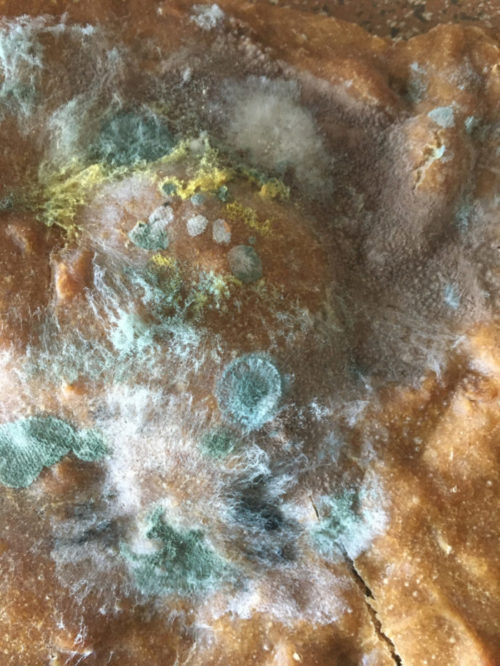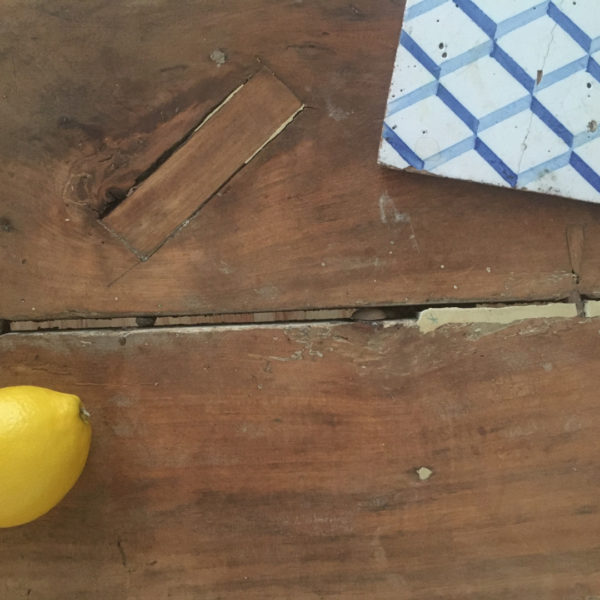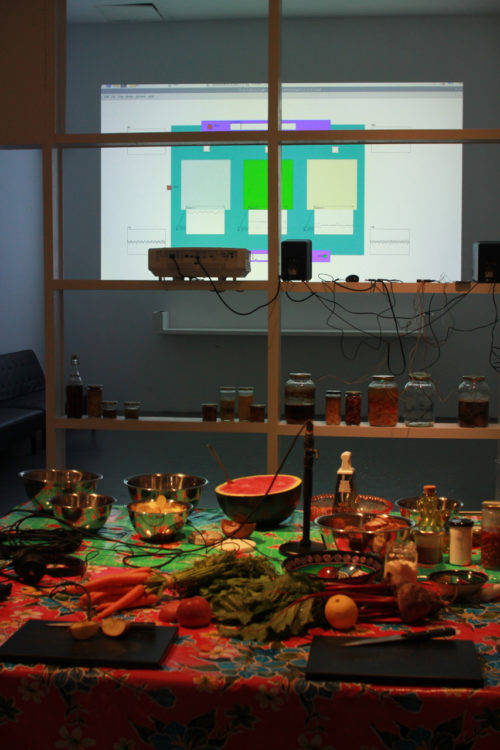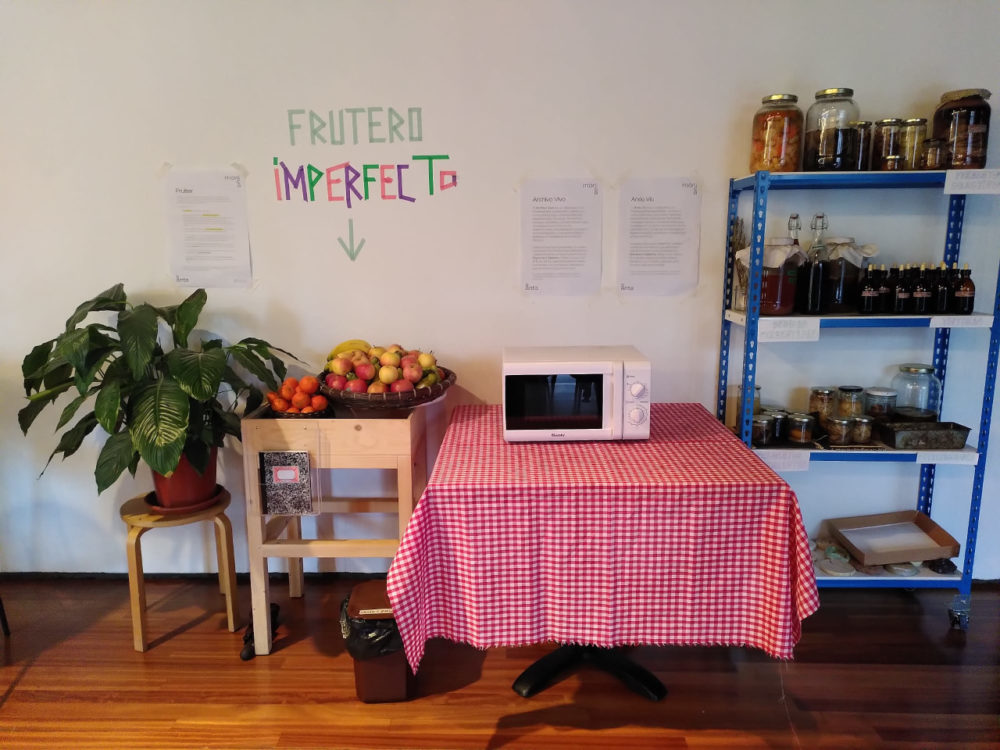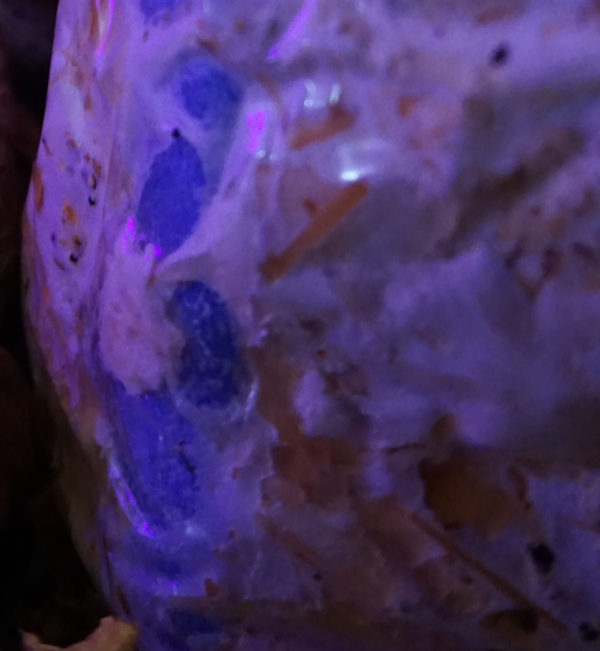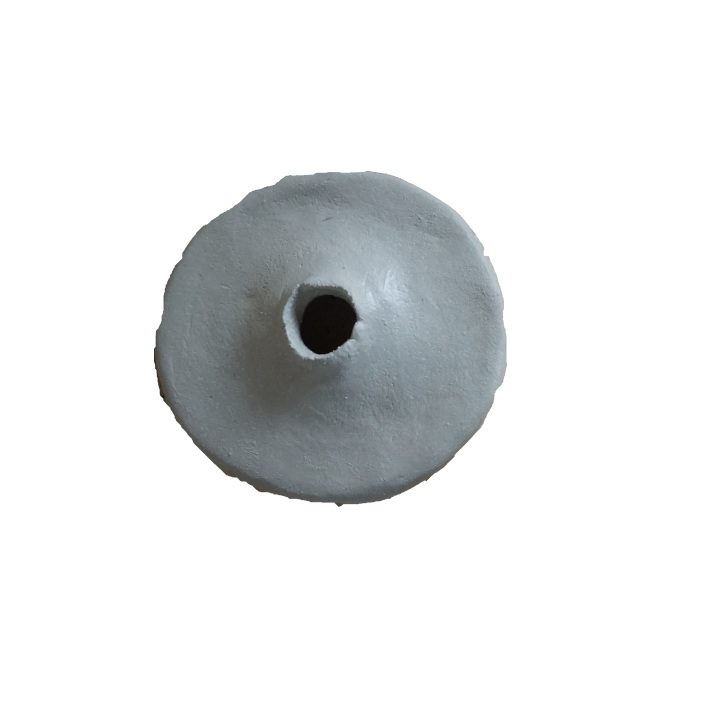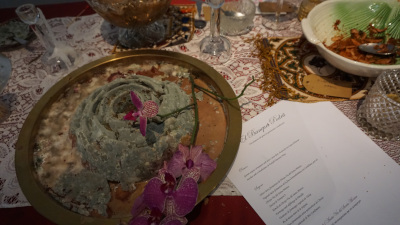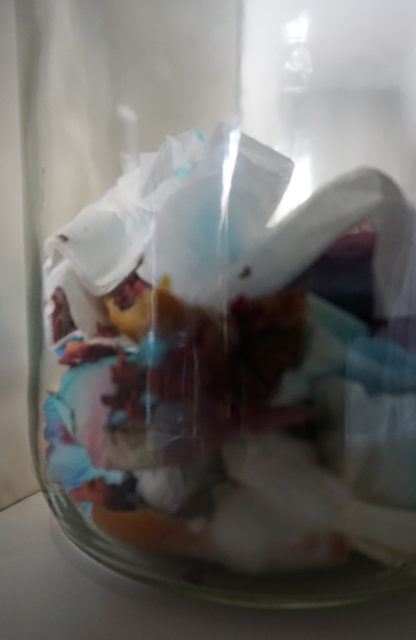PUAj! Agua animada
Colectivo DU-DA junto a Marzia Mataresse, HANGAR, 2019
PUAJ! es un laboratorio abierto que surge del Grupo de Fermentación de Hangar, dando continuidad a un lugar de encuentro, intercambio, investigación y activación de procesos vivos y simbiosis con especies no humanas en un contexto de experimentación y de libre transferencia de conocimiento, creando y fortaleciendo vínculos con otros proyectos. Proponemos sesiones abiertas, donde involucrarnos en procesos vivos, con todos los sentidos, a nivel visceral. Entendiendo el cuerpo como agente de cambio, lugar de simbiosis, producción de conocimiento y parte de una red infinita de relaciones sociales y ecológicas. Siendo conscientes de los recursos de los que dependemos y de nuestra responsabilidad sobre los entornos que co-habitamos reduciendo el daño en tiempos de crisis climática. Queremos explorar el significado de los cuidados en un planeta mucho más que humano, recuperando y compartiendo sabores y saberes, cuestionando el límite cultural de lo que se considera podrido, alimento, medicamento y veneno. Tocarnos con organismos de especies diferentes en el mismo lugar y al mismo tiempo, siendo olfato e intuición, desbordarnos, ser rizoma.
Junto a nuestra sabia amiga Marzia ocupamos el Wetlab de Hangar de octubre a diciembre a través de tres sesiones temáticas en las que leemos, discutimos y activamos procesos de simbiosis, nutrición simbiótica y fermentación; micología, reparación medioambiental y formas de co-existencia no-explotativa; y micro-algae, residuos y teoría Gaia.
Primer encuentro: Agua animada
“Nuestro pasado simbiótico, interactivo e interdependiente está conectado a través de aguas animadas.”
MARGULIS, Lynn
A veces, leer un texto se convierte en un ritual de bienvenida, Belén abre el espacio con su texto *Apertura*. Continuó Clara, leyendo un fragmento de Aguas vivas de Clarice Lispector, en el que llamamos a escuchar con todo nuestro cuerpo, a escuchar a través de la vibración que nos atraviesa. Como registro de la sesión confiamos en la memoria del agua, conectamos micrófonos de contacto en distintos puntos de la mesa, y los sonidos se transmitieron a un recipiente con agua como vibraciones y resonamos con ella. Partimos del concepto de Vernadsky de la materia viva como agua animada, en relación con el tarro de verdura en salmuera, contenedor de materia capaz de transformar y preservar la vida, en continua ebullición y tensión con el exterior. Salamos col y la aplastamos hasta que sacó su jugo, metimos en salmuera distintos vegetales, Sarai y Lara cortaron cebolla y lloraron, mientras Violeta cantó a Shakira, recogimos sus lágrimas y sabían a sal y a tinta. Mientras, Oscar le susurró al agua y le leímos textos de Lynn Margulis, Sandor Ellix Katz, Dorion Sagan y Luis Antonio Lázaro, y compartimos saberes, opiniones, experiencias, dudas, recetas, miedos…
Fermentamos colectivamente vegetales y cereales con distintas aguas saladas (sal, salmuera, saliva…), activando procesos de transformación y cuidado, con los que pudimos imaginar nuevas maneras de co-existir, alimentar(nos) y relacionarnos, en colaboración con otras especies. Repartimos los tarros y comenzó un proceso de espera visceral, de fiarnos de nuestra intuición, de buscar un lugar desde donde prestar atención, de mirar, oler, probar, escuchar el hervir de una olla sin fuego. Cuando comamos los alimentos vivos, incorporaremos los microorganismos a nuestro micro-bioma, favoreciendo que habiten en nuestro intestino, y que nos incorporen en su ecosistema. Comeremos y seremos comida.
/////////////////////////////////////////////////////////////////////////////////////////////////////////////////////////
PUAJ! is an open laboratory that emerges from the Hangar Fermentation Group, giving continuity to a place of meeting, exchange, research and activation of living processes and symbiosis with non-human species in a context of experimentation and free transfer of knowledge, creating and strengthening links with other projects. We propose open sessions, where we get involved in living processes, with all the senses, at a visceral level. Understanding the body as an agent of change, a place of symbiosis, production of knowledge and part of an infinite network of social and ecological relations. Being aware of the resources on which we depend and of our responsibility for the environments we co-habit, reducing damage in times of climate crisis. We want to explore the meaning of care on a planet much more than human, recovering and sharing flavors and knowledge, questioning the cultural limit of what is considered rotten, food, medicine and poison. Touching organisms of different species in the same place and at the same time, being smell and intuition, overflowing, being rhizome.
Together with our wise friend Marzia we occupy Hangar’s Wetlab through three thematic sessions in which we read, discuss and activate processes of symbiosis, symbiotic nutrition and fermentation; mycology, environmental repair and forms of non-exploitative co-existence; micro-algae, residues and Gaia theory.
First session: Animated water
«Our symbiotic, interactive and interdependent past is connected through animated waters.»
MARGULIS, Lynn.
Sometimes, reading a text becomes a welcome ritual, Belen opens the space with her text *Apertura* . Clara continued, reading an excerpt from Clarice Lispector’s Living Waters, in which we call to listen with our whole body, to listen through the vibration that passes through us. As a record of the session we trusted the memory of the water, we connected contact microphones in different points of the table, and the sounds were transmitted to a container with water as vibrations and resonated with it. For the first session, the laboratory was inspired by Vernadsky’s concept of living matter as animated water, in relation to the jar of vegetables in brine, a container of matter capable of transforming and preserving life, in continuous boiling and tension with the outside. We salted cabbage and crushed it until its juice came out, we brined different vegetables, some cut onions and cried, we collected their tears and they tasted like salt and ink. While Oscar whispered to the water and we read texts by Lynn Margulis, Sandor Ellix Katz, Dorion Sagan and Luis Antonio Lazaro, and shared knowledge, opinions, experiences, doubts, recipes, fears…
We share out the jars and a process of visceral waiting began, of trusting our intuition, of looking for a place from which to pay attention, of looking, smelling, tasting, listening to the boiling of a pot without fire. In this way, transformation and care processes were activated, and new ways of co-existing, feeding and relating will be imagined, in collaboration with other species. When we eat the live food, we will incorporate the microorganisms to our microbiome, favouring that they inhabit our intestine, and that they incorporate us in their ecosystem. We will eat and be eaten.
PUAj! Conexiones micelianas
Colectivo DU-DA junto a Marzia Mataresse y el Grupo de soberanía micológica de Calafou, HANGAR, 2019
«Mi red miceliana es casi inmortal, solo la repentina toxificación de un planeta o la explosión de su estrella madre pueden aniquilarme… Todas mis redes micelianas en la galaxia están en comunicación hiperluminosa a través del espacio y el tiempo.»
Terence McKenna, en The mushroom speaks.
Nos conectamos con el Grupo de soberanía micológica de Calafou para compartir sus conocimientos sobre micelización y reproducción de micelios. Hemos aprendido a construir una caja de cultivo estéril, clonar el micelio con Agar (para alimentar el micelio en placas de petri), mezclar el cultivo de las Gírgolas con la malta, lo repartimos, lo pusimos en tarros de cristal y tuvimos que esperar durante días hasta que se volvió blanco, entonces lo abrimos y las Gírgolas empezaron a crecer. A partir de sus investigaciones sobre el uso de los micelios y los mohos como elementos de soberanía alimentaria y bio-remediación para la restauración de nuestro medio ambiente, la sesión propuso una reflexión sobre las posibilidades micelianas de crear redes interespecíficas de cuidado y mutualidad, y de provocar procesos de transformación para trabajar con la materialidad de los daños, ya sean ecológicos, sociales, culturales, históricos, ficticios…
Leímos a Paul Stamets, Anna Tsing y Peter Mccoy, y escuchamos a John Cage y Terence McKenna. La sesión se transmitió ocupando temporalmente la estación 93.4 FM en un radio de 80 metros, y como los hongos, nos definimos en el encuentro, creamos redes, hablamos con Terence McKenna, imaginamos las posibilidades materiales y ecológicas, compartimos historias sobre el caminar y el recolectar, la descomposición, la creación de vínculos emocionales, evocamos el olor del bosque en otoño después de la lluvia, imprimimos esporas salvajes y nos propagamos.
/////////////////////////////////////////////////////////////////////////////////////////////////////////////////////////
«My mycelium network is nearly immortal, only the sudden toxification of a planet or the explosion of its parent star can wipe me out… all my mycelial networks in the galaxy are in hyperlight communication across space and time.”
Terence McKenna, in The Mushroom Speaks.
We connected with the Grupo de soberanía micológica de Calafou to share their knowledge of mycelium myceliation and reproduction. We got to know how to build a sterile culture box, clone mycelium with Agar Mix (to feed mycelium in petri dishes), mixed pearl oyster mushroom culture with malt, we shared it out, put it in glass jars and had to wait for days until everything turned white, then we opened it and the pearl oyster mushroom started to grow. Based on their research on the use of myceliums and moulds as elements of food sovereignty and bio-remediation for the restoration of our environment, the session proposed a reflection on the Mycelian possibilities of creating interspecific networks of care and mutuality, and of provoking processes of transformation to work with the materiality of the damage, be it ecological, social, cultural, historical, fictional…
We read to Paul Stamets, Anna Tsing and Peter Mccoy, and listened to John Cage and Terence McKenna. The session was broadcast by temporarily occupying the 93.4 FM station within a radius of 80 meters, and like the mushrooms, we defined ourselves in the encounter, created networks, talked to Terence McKenna, imagined the material and ecological possibilities, shared stories about walking and collecting, decomposition, creating emotional bonds, evoke the smell of the forest in autumn after the rain, we printed wild spores and spread.
PUAj! Flamencos rosados, espirulina y orina
Colectivo DU-DA junto a Marzia Mataresse, HANGAR, 2020
Gaia, la Tierra viviente, transciende en mucho a cualquier organismo concreto o incluso a cualquier población. El residuo de un organismo es el alimento de otro. Incapaz de distinguir entre el alimento de alguien y residuo de algún otro, el sistema gaiano recicla el material a escala global. Gaia, el sistema, emerge a partir de diez millones o más de especies vivientes conectadas que forman su cuerpo incesantemente activo.
MARGULIS, Lynn – Planeta simbiótico
Partimos de la «hipótesis Gaia» de Lovelock, olvidando la idea del medio ambiente como un escenario estático, y lo imaginamos junto a la vida como un sistema único, que al igual que nuestro cuerpo, está formado por miles de millones de formas de vida trabajando juntas, que crecen, metabolizan, producen y modifican su entorno. En el proceso de entender cómo las partes del medio ambiente pueden organizarse dentro del cuerpo, invocamos a nuestros antepasados acuáticos, quienes nos permitieron convertirnos en estructuras óseas al metabolizar el calcio, un residuo tóxico sobreabundante en el agua de mar. Mientras leíamos y discutíamos los textos de James E. Lovelock, Lynn Margulis y Dorion Sagan, ofrecimos agua para beber y recogimos la orina de los participantes. Reconocimos y nombramos a la Espirulina como una cianobacteria, una forma de vida determinante en la evolución de la biosfera terrestre, la buscamos en los lagos alcalinos donde beben los flamencos rosados y nos preguntamos por qué se sigue comercializando como un alga. Prestamos atención y tomamos en cuenta el impacto ecológico de la forma en que cultivamos nuestros alimentos. Investigamos y experimentamos con tecnologías para el cultivo de la espirulina en casa, utilizando la orina como nutriente, un ingrediente local y barato, con una proporción óptima de macronutrientes, montamos el kit de Xarxa spirulina y dividimos y compartimos el cultivo, aprendimos a hacer ceniza de agua para alcalinizar y jugo de hierro, extrayéndolo de tornillos oxidados.
Cerramos el círculo nutriéndonos con gelatina de agar hecha con agua animada de la primera sesión y polvo de espirulina, sintiendo su luz iluminando nuestras células, su proteína y clorofila, un fitonutriente limpiador, desintoxicante de la sangre, que bajo el microscopio se confunde con ella.
/////////////////////////////////////////////////////////////////////////////////////////////////////////////////////////
Gaia, the living Earth, transcends in much to any particular organism or even any population. The residue of one organism is the food of another. Unable to distinguish between someone’s food and someone else’s waste, the Gaia system recycles material on a global level. Gaia, the system, emerges from ten million or more connected living species that form its incessantly active body.
MARGULIS, Lynn – Symbiotic Planet
We started from Lovelock’s «Gaia hypothesis», forgetting the idea of the environment as a static scenario, and imagined it together with life as a unique system, which like our body, is formed by billions of life forms working together, which grow, metabolize, produce and modify their environment. In the process of understanding how parts of the environment can become organized within the body, we invoked our aquatic ancestors, who allowed us to become bone structures by metabolizing calcium, an overabundant toxic waste in seawater. While reading and discussing texts of James E. Lovelock, Lynn Margulis and Dorion Sagan, we offered water to drink and collected the urine of the participants. We recognized and named Spirulina as a cyanobacteria, a determining form of life in the evolution of the terrestrial biosphere, we looked for it in the alkaline lakes where pink flamingos drink and we asked ourselves why it is still marketed as an algae. We paid attention and toke into account the ecological impact of how we grow our food. We researched and experimented with technologies for growing Spirulina at home, using urine as a nutrient, a local, inexpensive ingredient, with an optimal ratio of macronutrients, assembled the kit from Xarxa spirulina and divided and shared the Spirulina culture, learned how to make Water ash to alkalize and iron juice by removing it from rusty screws.
We closed the circle by nourishing ourselves by agar jelly made out of Animated water from the first session and Spirulina powder, feeling its light illuminating our cells, its protein and chlorophyll, a cleansing phytonutrient, detoxifier of the blood, which under the microscope is confused with it.
Gracias a todes les participantes por su presencia, paciencia y cuidado. Si te interesa participar de alguna manera o que organicemos algo juntes, dime cosas.


















